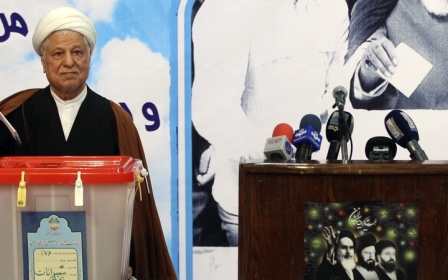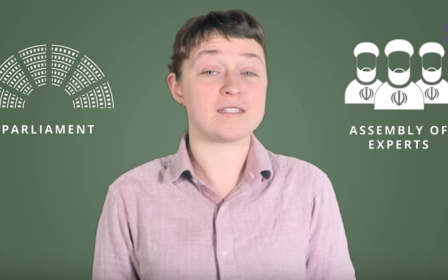Decoding Iran’s 2016 elections

On 26 February, 34 million of 55 million eligible Iranian voters headed to the polls to decide the composition of two assemblies, the Assembly of Experts, and the parliament, majlis.
The majlis’s primary responsibilities are legislation and oversight, and its 290 members are elected to four-year terms. The 88 members of the Assembly of Experts are elected to eight-year terms. The assembly is constitutionally tasked with the supervision and election of Iran’s supreme leader. On paper, the body has the authority to even dismiss the supreme leader.
The elections emerged as a head-on clash between two camps. Moderates (also known as pragmatists), reformists, and moderate conservatives came together and formed a coalition around a central discourse that was “rejection of radicalism”. The group of majlis candidates that the coalition supported was styled as a “List of Hope,” while its list for the Assembly of Experts was referred to as “Friends of Moderation”.
The de facto leader of the group was Iran’s former moderate president Akbar Hashemi Rafsanjani. In a statement, he asked people to actively participate in the elections to prevent “the institutionalisation of political and religious extremism in society”.
Their rivals, the Principlists – a name they gave themselves – introduced their own list of the “Coalition of Principlists”. The coalition consisted of conservatives and hardline conservatives.
Although the main battle was between these two camps, a third group under the banner of “Independents” also entered the race. While this group could play an important role in both assemblies, there has been almost no talk about them in the Iranian and Western media. The group’s shift toward any of the two main currents could significantly strengthen their position against their rivals.
In the case of the majlis, the election of 226 members has been finalised while the remaining 64 seats did not have a clear winner, meaning a second round of voting will be needed which is not expected until April or May.
Strangely enough, different sources have reported dissimilar mapping based on the candidates’ affiliation. Those sources closer to the Principlists claim that the group has won the majority, while those closer to the moderates claim the opposite. However, after careful examination by this author, the most reliable conclusion is that 83 seats have gone to the moderates/reformists, 78 to the Principlists, 60 to the independents, and five to religious minorities.
In any event, the totality of the assessments by these differing sources is indicative of the fact that, thus far, the weight of the two camps in majlis is as near to political balance as one could expect. But a final assessment of which camp possesses greater power cannot be offered until the independents begin taking sides and the results of the second round are tabulated.
Regarding the Assembly of Experts, given the massive disqualification of the moderate candidates by the ultra-conservative Guardian Council that vets the candidates, the tactic that the moderates adopted was to throw their weight behind second-tier principlist candidates, some with more moderate tendencies, to prevent the hardline-leading figures from entering the assembly.
The approach worked. Two out of the three prominent principalist figures who were the main target of this plan – leading hardline ayatollahs Mohammad Yazdi and Mohammad Taghi Mesbah-Yazdi – lost their seats in the assembly. Moreover, the third figure, Ahmad Jannati, the secretary of the Guardian Council, was ranked last in Tehran and narrowly kept his seat in the Assembly. Rafsanjani won first place with a record high 2.3 million votes.
But the main story of these elections was the outcome of majlis elections in Tehran, the capital. The mega-city of 6.4 million eligible voters has a share of 30 seats in the majlis. “List of Hope” candidates swept in a landslide, winning all 30 seats in an unprecedented victory. Gholam-Ali Haddad Adel, the Principlists’ leading figure, could not find a place better than 31st and was eliminated.
What happened and why
Perpetual tension between modernity and tradition is a century-old story within Iranian society that dates back to Iran’s Constitutional Revolution of 1905-1907. This battle is not about the modernists supporting and the traditionalists rejecting industrial and technological advancements. Rather, it is a clash between two value systems; a clash of civilisations within a civilisation.
In the pre-revolution era, modernisation, and at the same time Westernisation (widely viewed as an American project), collided with the Islamic traditions in Iran’s society. This modernisation project occurred under the 50-year watch of the two Pahlavi dynasty kings. Finally, upon the victory of the Iranian Islamic Revolution in 1979, the era of Westernisation came to an end, ushering in an era dominated by traditionalists.
This, however, was not the end of that battle. Tension continued, changing in both form and intensity, from one period to the next. Tehran lay at the heart of this battle. The clashes became bloody in 2009 with the emergence of the Green Movement following the disputed presidential elections that resulted in the victory of Mahmoud Ahmadinejad. He, at the time, represented the power elite. The backbone of the Green Movement was middle- and upper-middle class urbanites, mainly Tehranis, who rejected the forceful imposition of the Islamic codes. They did not raise a single economic demand during the upheavals.
As the most recent elections neared, Rafsanjani and Rouhani, himself a disciple of Rafsanjani’s school of thought, began bluntly and fiercely confronting the conservatives. Rafsanjani’s attacks on the Guardian Council were unprecedented in the history of the Islamic Republic. They aimed to attract the support of the aforementioned portion of the society, first and foremost in Tehran but also in other large cities.
Although it is true that the Principlists’ defeat emanated from the continuation of that old, unfinished dispute, that was not the only factor.
The reality is that the modernists in Tehran had not forgotten the eight years of humiliation during the tenure of Ahmadinejad and the support of the Principlists for him. But the straw that broke the camel’s back was the massive disqualification of the moderate/reformist candidates by the Guardian Council, which was followed by their muscle-flexing and boasting about doing so.
In addition, accusations and massive negative propaganda reached new heights when hardliners denounced moderates as “anglophile” and claimed that their list of candidates was made in the United Kingdom by government scribes working out of the offices of BBC Persian.
Resentment and hate in the camp of the opponents of the hardliners was manifested in their reactions on social networks, mainly Telegram, which for the first time in Iran’s elections played a significant role in the mobilisation of this portion of the voters.
Jon Krosnick, a political science professor at Stanford University, has conducted an ambitious study of voter attitudes spanning a 24-year period. He concludes that dislike is a much more compelling reason to cast one’s ballot. “If you dislike at least one of the two candidates, then you really are motivated to participate – so in other words it’s really disliking a candidate that motivates turnout,” he contends.
A few days before the elections, Tabnak, one of the most popular websites in Iran, ran a poll. To the question of “Why I’m participating in the 26 February elections,” 65 percent responded, “To prevent my opponents from being elected.”
The spectacular victory of the moderates in Tehran – preventing the Principlists from gaining even one seat out of 30 – is a clear manifestation of the formation of an intersubjective anger and dislike among the modernists and a strong motivation factor in their voting for the List of Hope.
The explanation that Vahid Yaminpour, an Iranian political analyst close to the hardliners, offers for the “absolute defeat” of the Principlists in Tehran is that in Tehran pro-Western sentiments are prevalent. As mentioned before, this tendency is strong in a large faction of the population in Tehran and certainly has been the basis for the emergence of this phenomenon.
But if this factor alone was responsible for the Principlists’ defeat, it is curious why this scenario did not happen in the 2012 elections.
Why did all the Principlists who were elected in 2012 in Tehran lose their seats, including Haddad Adel, who won the first place in 2012 elections? The answer must be seen in the emergence of anger and hate in the liberal portion of the Tehrani population as a result of the unfair and high-handed position of the Principlists. The population once again showed that it cannot be ignored.
- Shahir Shahidsaless is a political analyst and freelance journalist writing primarily about Iranian domestic and foreign affairs. He is also the co-author of “Iran and the United States: An Insider’s View on the Failed Past and the Road to Peace”.
The views expressed in this article belong to the author and do not necessarily reflect the editorial policy of Middle East Eye.
Photos: Iranian newspapers covering election results are seen being sold in Tehran on 1 March, 2016 (AA).
New MEE newsletter: Jerusalem Dispatch
Sign up to get the latest insights and analysis on Israel-Palestine, alongside Turkey Unpacked and other MEE newsletters
Middle East Eye delivers independent and unrivalled coverage and analysis of the Middle East, North Africa and beyond. To learn more about republishing this content and the associated fees, please fill out this form. More about MEE can be found here.





